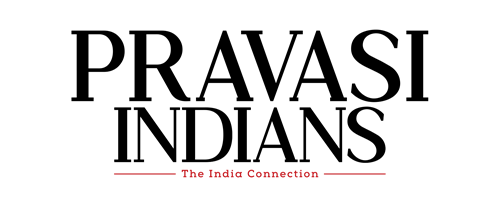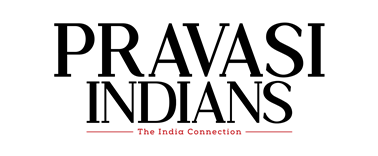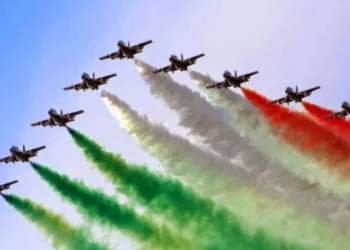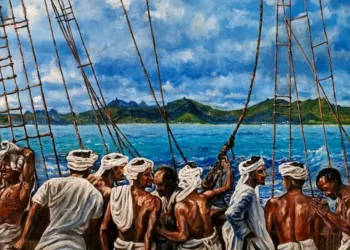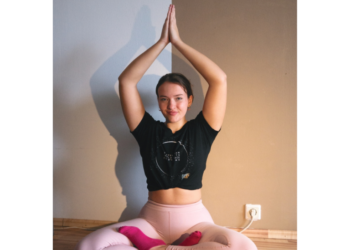By Parsa Venkateshwar Rao Jr

When Union Minister for Health and Family Welfare made a suo motu statement about Covid-19 in the Lok Sabha on February 10, 2020, there were just three cases in India, all from Wuhan, and the three travelled to Kerala, where they were quarantined, they got well and went home. But the country had to take other precautions and prepare itself for the pandemic. Dr Vardhan told the House: “The ever increasing magnitude of this outbreak calls for a concerted effort not only by health but all sectors of Government.
Government of India has initiated a series of action to prevent entry of the disease and contain it.” One of the things was to screen passengers coming from Singapore, Thailand, Hong Kong, and China at the airports. Vardhan said , “As of today, a total of 1818 flights have been screened covering a total of 1,97,192 passengers.” And the screening of passengers had begun on January 18. The minister had also informed that on January 31 and February 1, Air India flights airlifted 647 Indians and seven Maldivians had been airlifted from Wuhan, which was placed under a lockdown, and brough to Delhi and they had been quarantines in special camps at Manesar set up by the Indian Army and at Chawla camp set up by Indo-Tibetan Border Police (ITBP).
By the time, Dr Vardhan hade made the statement, Prime Minister Narendra Modi had set up a committee of Group of Ministers on February 3, headed by the Health Minister and comprising the ministers of civil aviation, external affairs, minister of state for home, minister of state for health and family welfare, and minister of state for shipping. The first meeting of the GoM was held the same day. At the third meeting held on March 3, the GoM was told that 5,57,431 passengers were screened at the airport and 12,431 at seaports.
On March 15, Prime Minister Modi addressed a South Association of Regional Cooperation (Saarc), and informed that India had been proactive, and it has set in place protocols like screening people coming into India and of evacuating Indians struck in other countries. He said, “We fully recognize that we are still in an unknown situation. We cannot predict with certainty how the situation will unfold despite our best efforts.
 The prime minister declared a national lockdown of 15 days starting from March 25.On April 1, there were 1673 confirmed cases and 38 deaths. On May 1, this number grew to around 32,000 cases because the PIB release for May 1, 2020 says, “So far, 8888 people have been cured. This takes our total recovery rate to 25.37 per cent.” On June 1, 2020, the PIB release says, “Thus so far, a total of 91,818 patients have been cured of Covid-19. The recovery rate in the country is progressively increasing and has reached 48.19 per cent amongst Covid-19 patients. The recovery rate on 18th May was 38.29 per cent. On 3rd May it was 26.59 per cent. On 15th April it was 11.42 per cent.” Then the press release goes on to say, “Presently there are 93,322 active cases in the country which are under active medical supervision.”
The prime minister declared a national lockdown of 15 days starting from March 25.On April 1, there were 1673 confirmed cases and 38 deaths. On May 1, this number grew to around 32,000 cases because the PIB release for May 1, 2020 says, “So far, 8888 people have been cured. This takes our total recovery rate to 25.37 per cent.” On June 1, 2020, the PIB release says, “Thus so far, a total of 91,818 patients have been cured of Covid-19. The recovery rate in the country is progressively increasing and has reached 48.19 per cent amongst Covid-19 patients. The recovery rate on 18th May was 38.29 per cent. On 3rd May it was 26.59 per cent. On 15th April it was 11.42 per cent.” Then the press release goes on to say, “Presently there are 93,322 active cases in the country which are under active medical supervision.”
On Jul 1, the cumulative figure for cured people stood at 3,47,978, and recovery rate was 59.43 per cent. And the press release says, “Presently there are 2,20,114 active cases and all are under medical supervision.” And on August 1, 2020, the PIB release gives a clear graphic of the Covid-19 numbers: 16,95,988 confirmed cases, 10,94,374 recovered, and 36,511 deaths. On September 1, 2020, the Covid-19 numbers rose dramatically: 36,91,166 confirmed cases; 28,39, 882 recovered; 65,288 dead. And on October 1, 2020, the numbers were: 97,40, 705; recovered cases: 52,73,201. The PIB release avoided mentioning the cumulative figure of those who died on this date. On November 1, the cumulative recovered cases were 74,91,513.
 It is in December 2020 that the total number of Covid-19 infections crosses 10 million or one crore. The exact figure was 1.02, 66,674, and it is in October 2020 that the death toll due to Covid-19 crossed the 100,000 or one lakh mark. It stood at 1,21, 641.
It is in December 2020 that the total number of Covid-19 infections crosses 10 million or one crore. The exact figure was 1.02, 66,674, and it is in October 2020 that the death toll due to Covid-19 crossed the 100,000 or one lakh mark. It stood at 1,21, 641.
On April 8, 2021, the total number of infections in India were 1,29,28. 574. There were 1,18,51,393 recoveries, which amounted to 91 per cent of recoveries. The number of people who had died was 1,66,862, and the fatality rate stood at 1.29 per cent. But on May 8, the number of total cases stood 2,18,92,676, of whom 1.79, 30,960 had recovered, and the recovery rate stood at 81.90 per cent. The number of people who had died stood at 2,38,270 and the fatality rate was 1.09 per cent. On June 7, the total number of infections was 2,89, 09,975, of whom 2,71,59,180 had recovered, and the recovery stood at 93.94 per cent. The total number of deaths stood at 3,49, 186, and the fatality rate was 1.21 per cent.
In these two months, larger number of people were infected, larger number of people recovered and larger number of died than in 2020. This was the fatal second wave, where the number of infections rose from 1,29,28,574 on April 8 to 2,89,09,975 on June 7. Similarly, recoveries rose 1,18,51,393 on April 8 to 2,71,59,180 on June 7. And the number who had died rose from 1,66,862 to 3,49,186 in these two months.
The silver lining is that the number of people who had been vaccinated had risen too in these two months, from 9,01,98,673 on April 8 to 16.73 crore on May 8 to 23.27 crore on June 7.
The numbers show the enormity of Covid-19 in India. The people who had survived is overwhelmingly large, but the people and the country have paid a heavy price due to deaths as well. The numbers in India can be misleading if we see them in proportion to the 1.35 total population of the country. But in terms of absolute numbers, a large number of Indians had paid a price. It is these numbers that had to be kept in mind because our health system was unable to cope with the number of people who had fallen sick. Only a small proportion of them were critical but the hospital system could not cope with the challenge when the infections crossed 400,000 every day for a few days in the last week of April.
